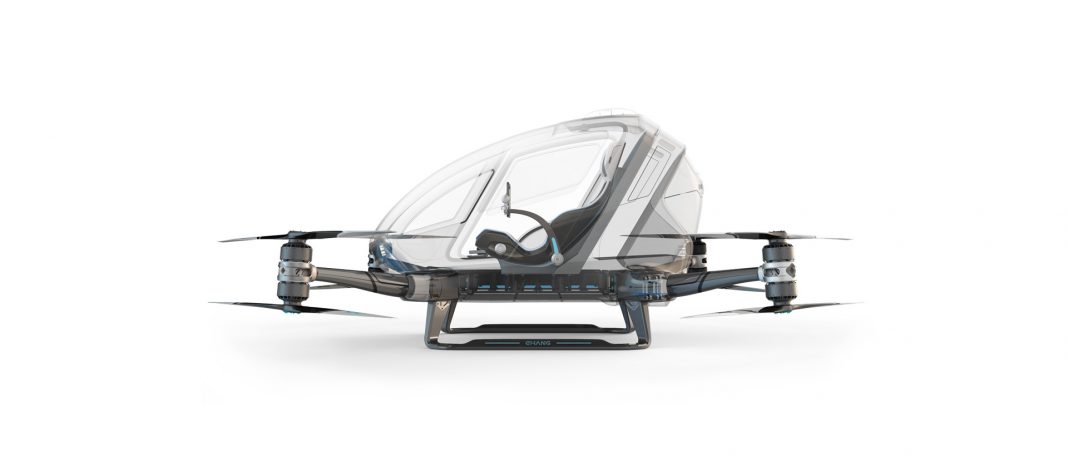You’ll probably remember the old classic movie, Chitty Chitty Bang Bang where dear old Dick Van Dyke played the part of Caractacus Potts and his story involving the crazy flying car. And back then you probably laughed your socks off at the very thought of a car taking to the skies. But, now, it’s actually here. There are several models, including one from Uber that are already in the air. But don’t get your hopes up as you and I won’t be driving them anytime soon.
One such example of a flying car is the Terrafugia Transition hybrid that’s a car with wings that fold up when driving and are let loose when you reach the runway. But, this is pretty much considered a private plane, and you will need the appropriate pilot’s license to go with it. So how about those rotor-driven aerial vehicles that work like mini helicopters or maxi drones? There are several of these examples out there and many that don’t require a special license to operate them.
However, they’re not flying cars in the sense of Chitty Chitty Bang Bang or the Jetsons craft, are they? For true space-age stuff what we need are cars that use Vertical Take-Off and Landing (VTOL) technology. One such example of this can be seen from Lilium Aviation, whose already testing its all-electric jet. But again, the license issue arises. So instead, companies have been forced to think outside the box, and what they’ve come up with is this: automated flying cars.
This is the idea behind Uber’s new Elevate initiative. A future service, provisionally named Uber Air was described recently by Uber chief product officer, Jeff Holden. He said, “You push a button, and you get a flight.” A car journey between San Francisco and San Jose can take over 2 hours, but with Uber’s new initiative that could be cut to just a 15-minute flight. Initially, the company would use a combination of both human pilots and automation but would hope to become fully controlled by artificial intelligence eventually.
Dubai has already announced its intentions to deploy a fleet of air taxis to the skies this summer using the Chinese EHang 184 passenger drone. Airbus too have been making advances with their autonomous vehicle project and is hoping to start test flights as early as next year. Both Uber and Airbus envision their systems cutting down pollution and noise in the future and offering a viable alternative to current public transport methods. Airbus CEO Tom Enders said recently, “In a not too distant future we’ll use our smartphones to book a fully automated flying taxi that will land outside our front door – without any pilot.”
However, as nice as all that sounds there are still many hurdles to overcome – air traffic control being a major one. Allowing millions of flying vehicles to take to the skies randomly would wreak havoc with air traffic control systems everywhere and what’s in place now just wouldn’t be able to cope with it all. There’s also the battery issue to consider that most electric vehicles struggle with. Richard Aboulafia is an aviation consultant, and he says, “The biggest issue with the Elevate manifesto is that it assumes the existence of an amazing battery with a phenomenal energy density. We’ve been striving for this for the last century. You’d need the kind of reliability that puts you in the air and keeps you there safely. This isn’t a Tesla – you can’t just pull over to the side of the road.”
Perhaps manufacturers need to master the likes of the autonomous car first before they move on to higher things. “When we have a safe self-driving car, we’ll be part of the way there,” says Aboulafia. “But, we’ll need some dramatic improvements in sense-and-avoid technology, to be able to track everything in all directions.” Maintenance would also be an issue. “Aircraft maintenance is a lot more expensive than car maintenance – ask any pilot. If nothing else, we’d need total maintenance revolution,” Aboulafia says. So, it looks as though we may have to wait a few more decades before we really see flying cars in the way that Chitty Chitty Bang Bang was portrayed.
More News to Read
- The Many Mysteries of the Proton, What do We Know About them?
- VR Content is set to Come Direct From Space
- Human Emotion Defines Reality and Shapes the World Around Us
- Lowdown on The Farthest: NASA’s Documentary about the First Interstellar Spacecraft
- Do Wormholes Hold the Answers of Transporting to Another Universe?











